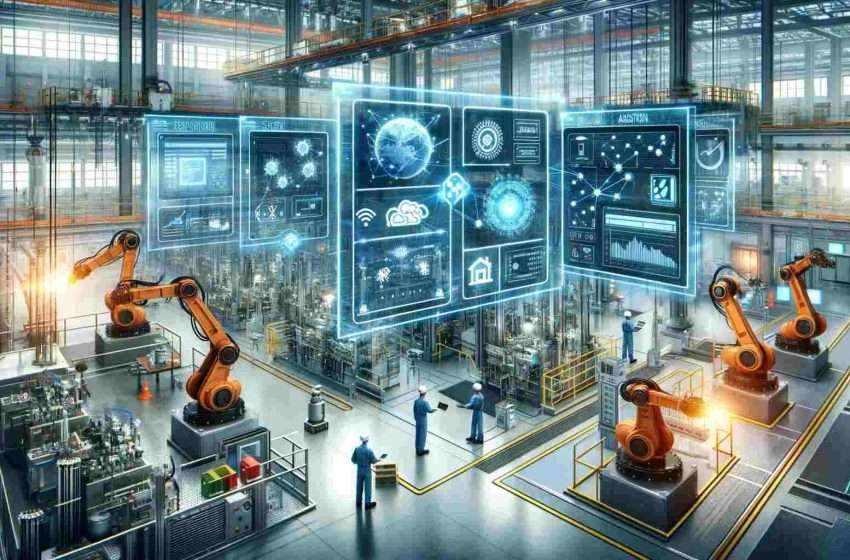Industrial Edge Computing: Revolutionizing Real-Time Data Processing

In the rapidly evolving landscape of industrial operations, the demand for real-time data processing has never been higher. Industrial Edge Computing is emerging as a revolutionary technology that bridges the gap between traditional data centers and the physical world of manufacturing, energy, transportation, and other critical sectors. By processing data closer to the source of generation, industrial edge computing enables faster, more efficient, and secure operations. This article explores the transformative impact of industrial edge computing on real-time data processing, its benefits, and the future it heralds for various industries.
Understanding Industrial Edge Computing
Industrial edge computing refers to the deployment of computing resources at the edge of the network, near the data source, such as sensors, machines, or other devices in industrial settings. Unlike traditional cloud computing, which involves sending data to centralized data centers for processing, edge computing processes data locally, at or near the source. This approach reduces latency, enhances data security, and enables real-time decision-making, making it ideal for industrial applications.
The Need for Real-Time Data Processing
In industrial environments, the ability to process data in real-time is crucial for several reasons:
1. Operational Efficiency
Real-time data processing allows for immediate analysis and response to operational conditions. For instance, in manufacturing, real-time monitoring of equipment performance can identify issues before they lead to downtime, optimizing maintenance schedules and reducing operational costs.
2. Enhanced Safety
In industries such as oil and gas, mining, and chemical manufacturing, real-time data processing is vital for ensuring safety. By continuously monitoring environmental conditions and equipment status, edge computing can trigger instant alerts and automated responses to prevent accidents.
3. Improved Quality Control
In sectors like pharmaceuticals and food production, maintaining product quality is paramount. Real-time data from sensors and IoT devices can be analyzed on the edge to ensure that products meet stringent quality standards, reducing waste and ensuring compliance.
4. Reduced Latency
For applications requiring immediate feedback, such as autonomous vehicles and robotic systems, even milliseconds of delay can be critical. Edge computing minimizes latency by processing data locally, enabling rapid responses and enhancing system performance.
Benefits of Industrial Edge Computing
1. Speed and Responsiveness
One of the most significant advantages of industrial edge computing is its speed. By processing data at the edge, companies can achieve near-instantaneous insights and responses. This is particularly beneficial for time-sensitive applications, such as predictive maintenance, real-time monitoring, and automated control systems.
2. Enhanced Security and Privacy
Data security is a top concern in industrial environments. Edge computing reduces the need to transmit sensitive data to centralized cloud servers, minimizing the risk of data breaches and cyber-attacks. Local data processing also ensures that proprietary information remains within the confines of the industrial facility, enhancing privacy.
3. Scalability and Flexibility
Edge computing enables scalable and flexible solutions that can be tailored to specific industrial needs. By deploying edge devices and nodes, companies can scale their processing capabilities as needed, without the limitations of centralized data centers. This flexibility allows for customized solutions that address unique operational requirements.
4. Cost Savings
Reducing the amount of data sent to the cloud for processing can result in significant cost savings. By handling data locally, companies can lower bandwidth costs and reduce dependency on expensive cloud storage and processing services. Additionally, the efficiency gains from real-time processing can lead to lower operational costs and increased productivity.
5. Reliability and Resilience
Edge computing enhances system reliability by reducing dependence on remote data centers and internet connectivity. Local processing ensures that critical operations can continue even if there are disruptions in network connectivity. This resilience is essential for maintaining continuous operations in industrial settings.
Industrial Applications of Edge Computing
1. Manufacturing
In the manufacturing sector, edge computing is revolutionizing production processes. Smart factories equipped with edge devices can monitor equipment health, optimize production lines, and implement predictive maintenance strategies. By analyzing data from sensors and machines in real-time, manufacturers can minimize downtime, reduce waste, and improve overall efficiency.
2. Energy and Utilities
The energy sector is leveraging edge computing to enhance grid management, optimize energy consumption, and integrate renewable energy sources. Edge devices can monitor and control energy distribution, detect faults in real-time, and manage distributed energy resources. This leads to more efficient and reliable energy systems, reducing operational costs and environmental impact.
3. Transportation and Logistics
In transportation and logistics, edge computing is enabling smarter and more efficient operations. Real-time tracking of vehicles and shipments allows for dynamic route optimization, reducing fuel consumption and delivery times. Edge devices can also monitor vehicle performance, enabling predictive maintenance and reducing the risk of breakdowns.
4. Healthcare
Edge computing is transforming healthcare by enabling real-time patient monitoring and personalized care. Wearable devices and smart medical equipment can collect and analyze patient data at the edge, providing instant insights to healthcare providers. This allows for timely interventions, improved patient outcomes, and more efficient use of medical resources.
5. Agriculture
In agriculture, edge computing is driving the adoption of precision farming techniques. By processing data from soil sensors, weather stations, and drones, edge devices can provide real-time insights into crop health, irrigation needs, and pest management. This leads to more efficient use of resources, higher crop yields, and reduced environmental impact.
The Future of Industrial Edge Computing
The future of industrial edge computing is promising, with several trends and advancements shaping its trajectory:
1. Integration with AI and Machine Learning
The integration of edge computing with AI and machine learning is unlocking new possibilities for predictive analytics and autonomous decision-making. Edge AI enables real-time analysis of complex data sets, allowing for more accurate predictions and automated responses in industrial applications.
2. 5G Connectivity
The rollout of 5G networks is set to enhance the capabilities of edge computing by providing faster, more reliable connectivity. 5G’s low latency and high bandwidth will enable seamless communication between edge devices, enhancing real-time data processing and enabling new industrial applications.
3. IoT and Edge Synergy
The synergy between IoT and edge computing is driving the development of smart industrial ecosystems. IoT devices generate vast amounts of data, and edge computing provides the processing power needed to analyze this data in real-time. This combination is leading to more intelligent and automated industrial operations.
4. Edge-to-Cloud Continuum
The future will see a more integrated edge-to-cloud continuum, where data processing is dynamically distributed between edge devices and cloud servers. This hybrid approach will optimize processing based on factors such as latency, bandwidth, and computational requirements, ensuring the most efficient use of resources.
Conclusion
Industrial edge computing is revolutionizing real-time data processing, offering unprecedented speed, security, and efficiency. By processing data at the edge, closer to the source, industrial operations can achieve greater responsiveness, enhanced safety, and improved quality control. As technology continues to advance, the integration of edge computing with AI, 5G, and IoT will unlock new possibilities for industrial innovation. Embracing industrial edge computing is not just a competitive advantage but a necessary step towards a smarter, more efficient, and sustainable industrial future.
Zainab Afzal is a senior SEO Consultant and Writer. She has 5+ years of experience in Digital Marketing. After completing his degree in BS computer science, she has worked with different IT companies.




